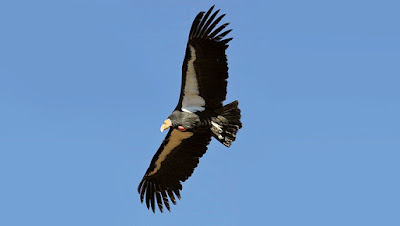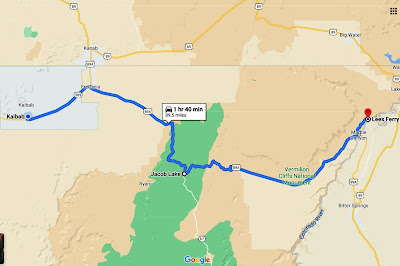POST #21-8
The Old Lee's Ferry Ghost Town....
Subscribe to our Blog!
Get E-Mail notifications about new posts!
Fill the CONTACT US TO SUBSCRIBE fields!
********
Tap any photo or video to enlarge/play.
Tap any underlined links to follow.
********
Today, November 28th, we drove over and checked out the old buildings and mining equipment at the actual site of the Lee's Ferry. This is the only place within Glen
Canyon where visitors can drive to the Colorado River in over 700 miles of
canyon country, right up to the first rapid in the Grand Canyon. Lee's Ferry was important in the exploration and settlement of northern Arizona, as a natural
corridor between Utah and Arizona. Here are some historic photos...
Charles H. Spencer came with his American Placer Corporation in 1910 and
set up operations at Lee’s Ferry...
He hoped to use high pressure hoses utilizing
water pumped from the river to sluice the gold from the Chinle shale, sending
that sluiced material by flume to an amalgamator set up to attempt to remove
the gold. This historic photo shows a boiler used by
Spencer, in a failed try at gold mining from 1910-1912, at Lee's Ferry....
The remains of the boiler today...
And the remains of the steam engine that was fed by that boiler...
Spencer even built a steamboat, dubbed the
“Charles H. Spencer,” to transport coal along the river as fuel for his
equipment. The boat, designed for much tamer
rivers was not very successful in navigating the more
powerful Colorado and was eventually beached and never operated again,
succumbing to the unforgiving river over the years...
This is all that's left of the steamer...
This is what's left of Spencer's old office...
The Mormon church built what became known as Lee’s Fort in 1874, and it still stands today. The building served as a home, trading post and school for ferry operators’ families.
Here's all that's left of the fort today...
Then we went a short distance to the Lonely Dell Ranch....John D. Lee, for whom the Ferry is named, was
a practicing polygamist who built cabins for two of his families at Lees Ferry.
His wife Emma named the ranch at Lees Ferry "Lonely Dell" due to its
austere remoteness. In 1877 Lee was
executed for his role in the Mountain Meadows massacre. In 1879, the LDS Church
bought the ferry rights from Emma Lee, granting the ferry service to Warren
Marshall Johnson and his families. A number of structures remain from the ranch
from the polygamist period of the Lee and Johnson families. This is the entryway to Lonely Dell Ranch,
where the ferrymen's families lived and farmed during the ferry's heyday...
Some old buildings at the Lonely Dell Ranch....
The LDS Church eventually sold the property and it wen through several owners until it was purchased by the National Park Service in the '60s...The original orchard was restored by the NPS and they maintain the old buildings.. You can harvest various fruit and nuts from the orchard when it is producing!
Today Lee's Ferry is officially Mile Zero where the rafting trips down the Grand Canyon begin, for a weeklong trip down the Colorado River...A lot of boats were leaving the while time we were here. That would be quite the adventure!
This was an interesting day of exploring! And our last day here at the Lee's Ferry area. Tomorrow we head further south...Destination Flagstaff, AZ...
Until Next Time!



















































